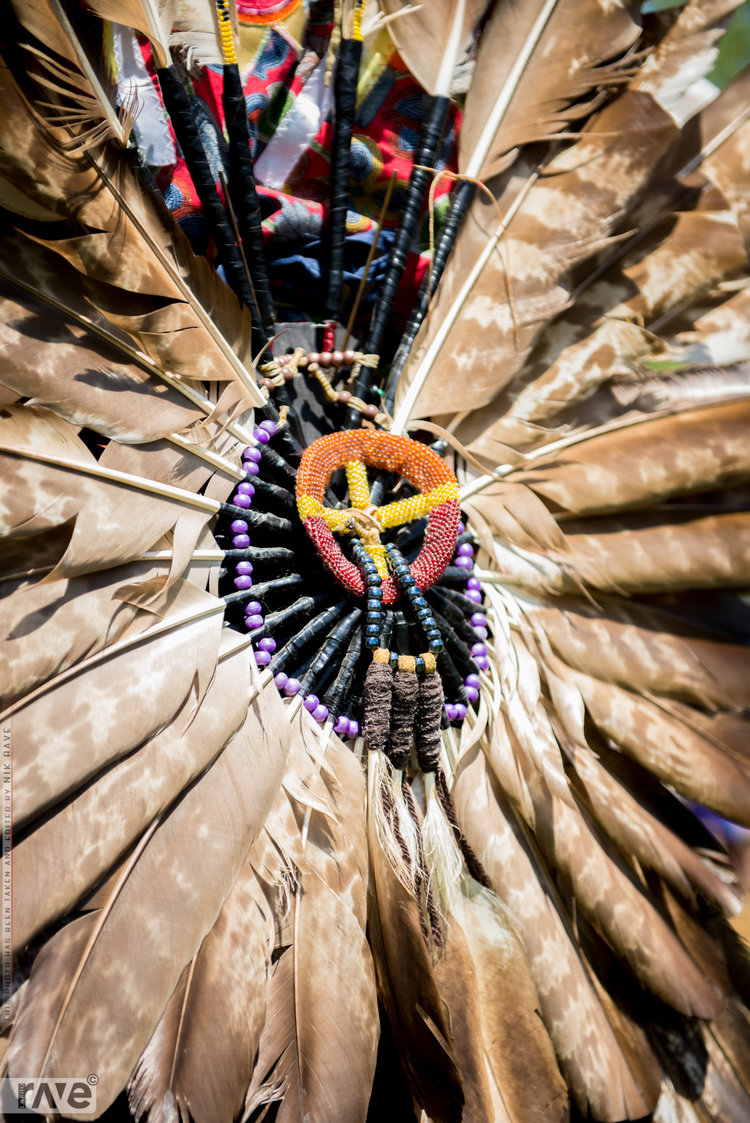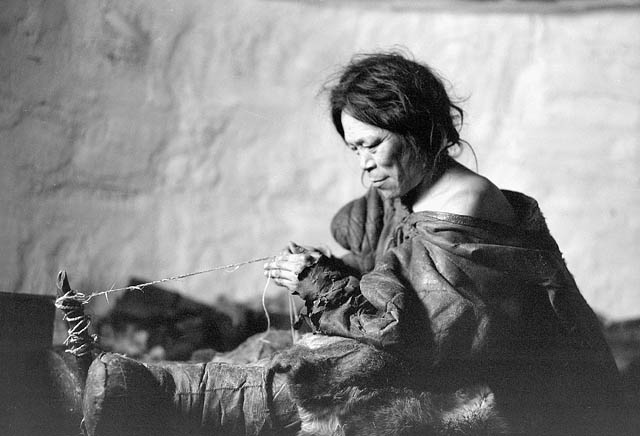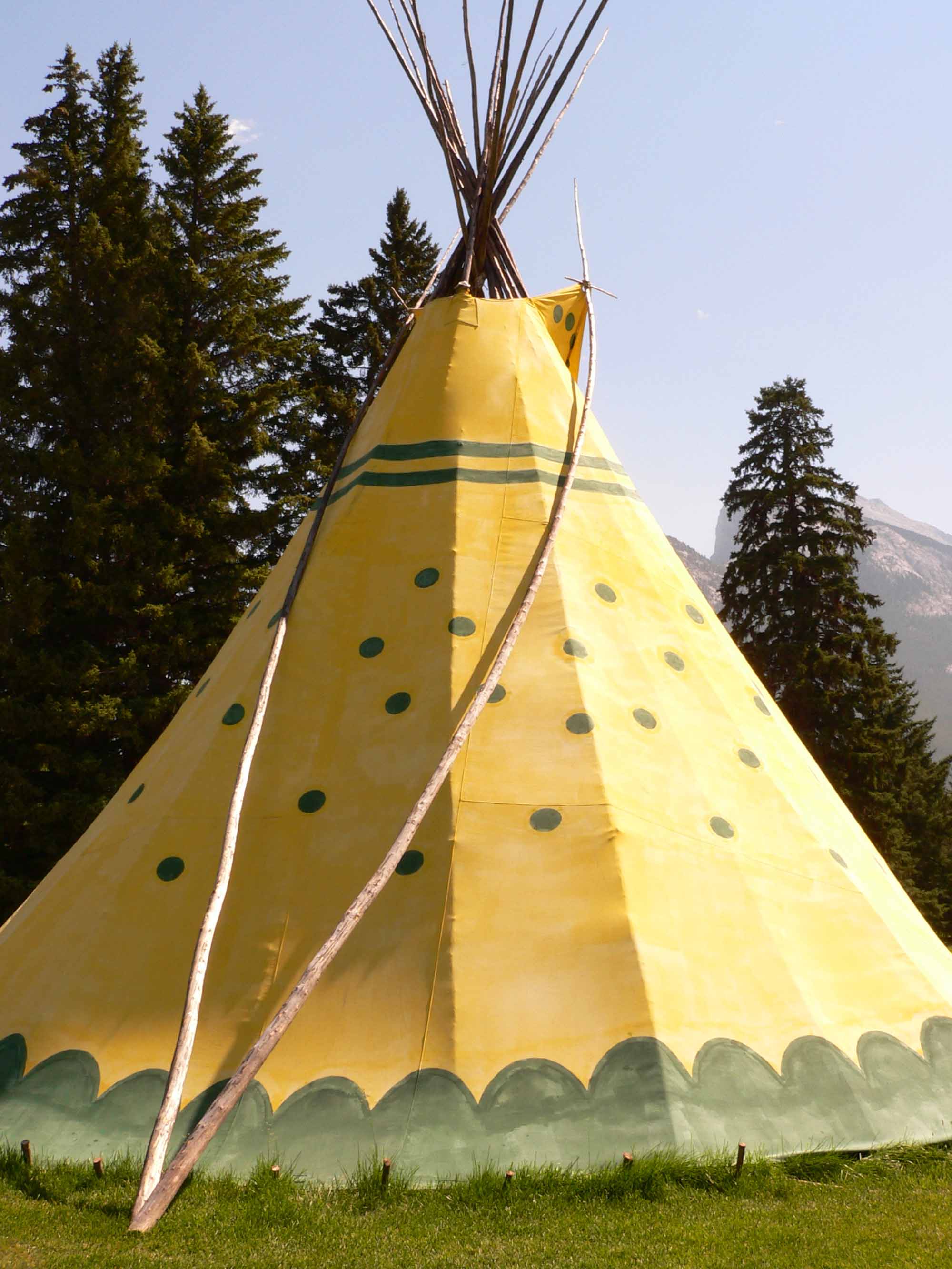
Origin and Definition
Regalia refers to the symbols, emblems and physical artifacts traditionally associated with a person of significance or with official titles and powers. While culturally specific, regalia generally reflects the authority, legitimacy or insider status of the person who wears or owns it.
Customarily, regalia is observed among various cultures globally. The term itself is Latin in origin, dating to the Middle Ages and often referring to the status of monarchs , rulers and religious leaders. Examples of European regalia includes crowns, jewels, sceptres and coats of arms.
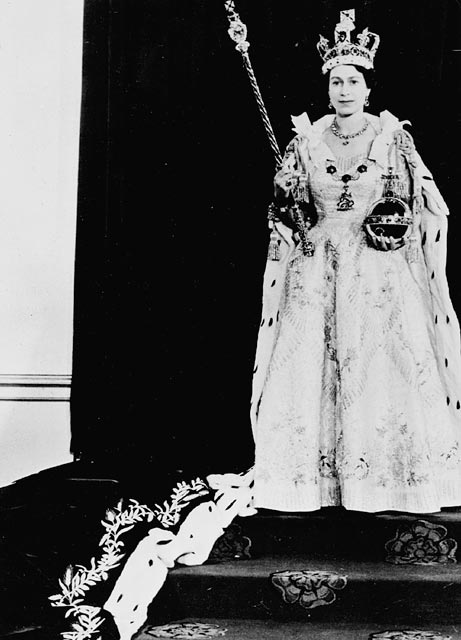
Among Indigenous peoples in North America, regalia refers to items worn by chiefs, such as headdresses, or by spiritual leaders, such as ceremonial masks, as well as to items of dress that bestow honour to average citizens, such as a jingle dress or Métis sash.
In addition to clothing, regalia can include woven textiles, jewellery, makeup, footwear, such as moccasins, and accessories, such as headbands, arm bands, breastplates, roaches, shawls, anklets, dance sticks and hackles.
Incorrectly labeled as “costumes,” (especially in outdated literature) Indigenous regalia is a living art that incorporates a variety of materials, including cedar, cotton, buckskin, beads, ribbons, porcupine quills, eagle feathers, bones and leather as well as shiny precious metals, for example silver, brass and copper. (See also Indigenous Art in Canada.)
Purpose and Use
There is no standard practice of regalia among Indigenous peoples in Canada because of the variation in cultural practices across different First Nation, Métis and Inuit communities. Generally speaking, however, regalia is typically worn during special events such as political gatherings, celebrations of life, including births, marriages, graduations and so on, religious ceremonies, funerals and powwows.
Another commonality across Indigenous cultures is that pieces of regalia are significant to both personal and cultural identity. They tell a story, transmit heritage and serve as badges of honour. Regalia can reflect an individual’s connection to their ancestors, family members and clan. The materials used, and their style or aesthetic, can also represent specific Indigenous nations. The making of regalia is a deeply personal and labour-intensive act that reflects the complex craft patterns and skills of Indigenous artisans.
Effects of Colonization
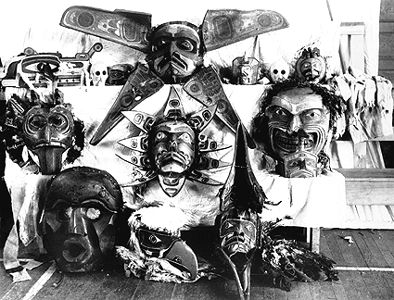
Confiscated masks and other goods that belonged to the Kwakwaka'wakw (Kwakiutl) people who attended Dan Cranmer's potlatch in 1921 at the village of Alert Bay, Northwest Territories. (courtesy Royal British Columbia Museum)
From the late 19th century until 1951, the Indian Act restricted Indigenous ceremonies, such as the potlatch and the Sun Dance, consequently preventing the wearing of regalia typically worn to these events. Traditional dress was also forbidden in residential schools. Before the Indian Act was changed in 1951, Indigenous peoples required the permission of the Indian agent (a federal administrator of Indigenous affairs) if they wanted to appear in ceremonial dress off reserve.
During a period of Indigenous rights activism beginning in the 1960s, efforts were made to revive previously banned Indigenous customs and ceremonies. (See also Indigenous Political Organization and Activism in Canada.) As a result, Indigenous peoples reclaimed the regalia traditionally worn to such events. Today, Indigenous peoples wear regalia as a sign of their autonomy and heritage.
Cultural Appropriation
Many Indigenous peoples consider the wearing of traditional regalia by non-Indigenous peoples to be a form of cultural appropriation, especially when this occurs at events where regalia is not typically required. For example, the wearing of inauthentic headdresses to music concerts has attracted the attention of Indigenous activists. In response, a variety of Canadian music festivals such as the Edmonton Folk Music Festival and the Osheaga Music and Arts Festival in Montreal have banned visitors from wearing headdresses. Similarly, the owners of the Winnipeg Jets NHL team eventually banned the wearing of headdresses at games.
The sale of mass-produced imitations of regalia is also widely considered disrespectful among Indigenous peoples. This occurs, for example, in the production of Hallowe’en costumes and tourism items that tokenize deeply symbolic Indigenous creations.

 Share on Facebook
Share on Facebook Share on X
Share on X Share by Email
Share by Email Share on Google Classroom
Share on Google Classroom
